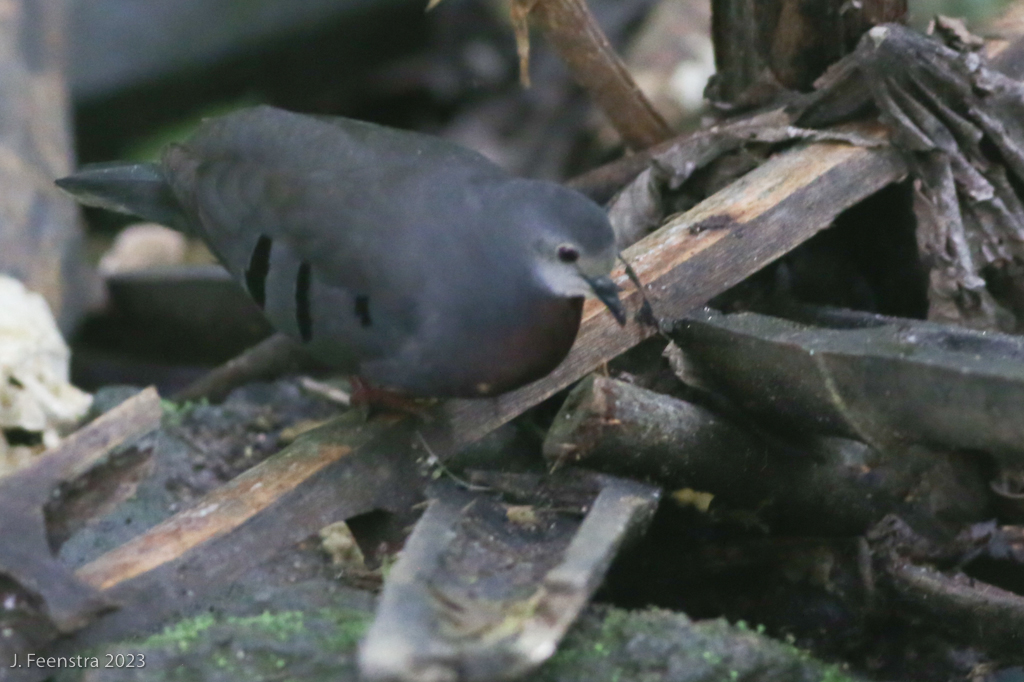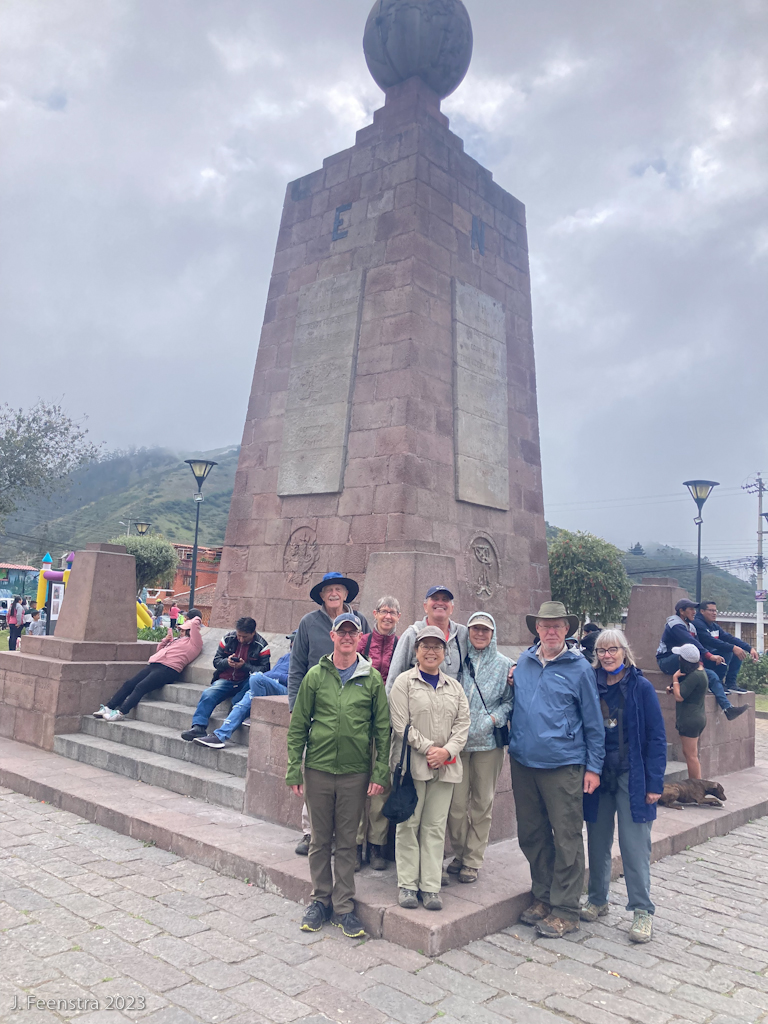WINGS Tour: Ecuador, Mindo February 2023
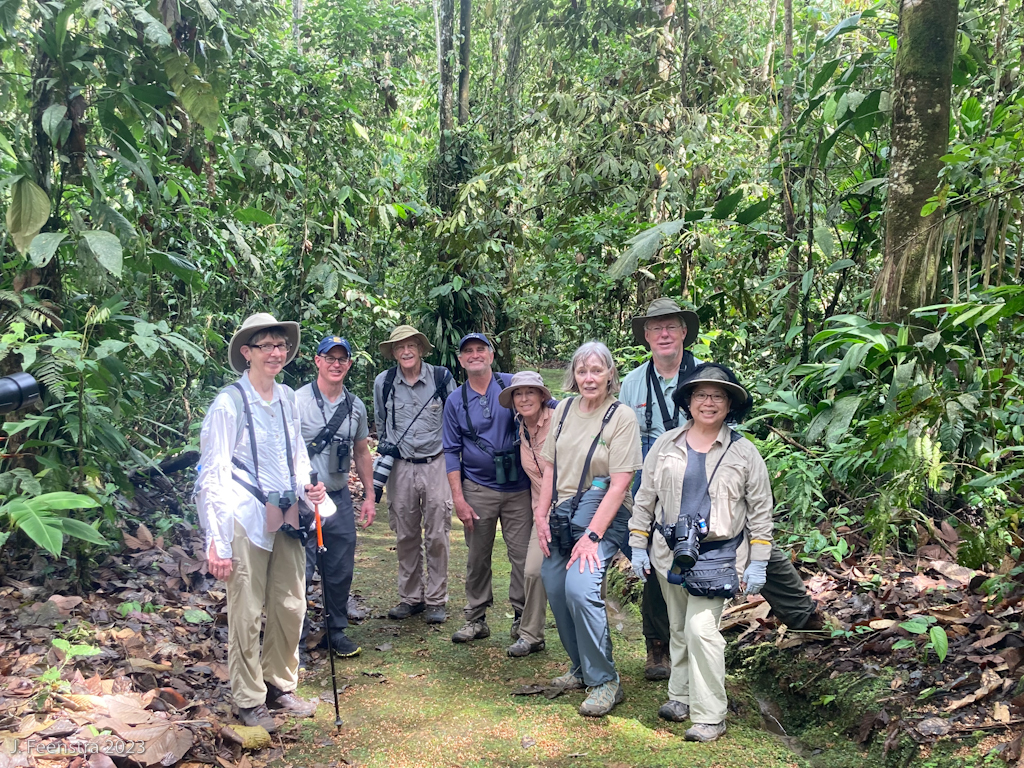
29 January - 6 February, 2023
The Gang: Kate, Jeff, Bob, Dave, Kay, Mary, Peter, Gail, Jon (bird guy), and Edwin (El Chofer)
This is adapted from what I wrote for the WINGS tour page here.
There are few places from which day trips can offer so much diversity. It’s what makes Mindo in northwest Ecuador special for birders and why we keep coming back. It’s at a good elevation surrounded by some prime forest and there are roads to get higher, lower, and to patches of forest that are just different. As such, in our week, every day was exciting and different. Our highlights included multi-colored Plate-billed Mountain-Toucan (the cover of the bird guide), screeching Andean Cocks-of-the-rock, bizarre Toucan Barbets, ridiculous Sword-billed Hummingbirds (among dozens of other species), and piles of fancy tanagers like Grass-green, Glistening-green, Moss-backed, Beryl-spangled, and Flame-faced. The hits kept coming and we never had a slow day.
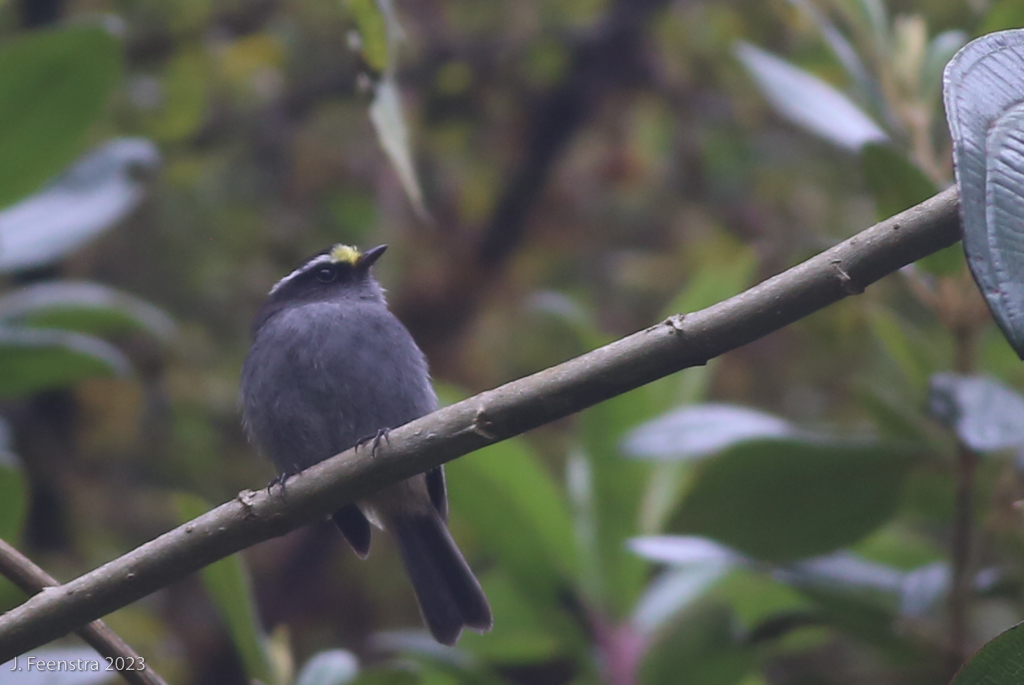
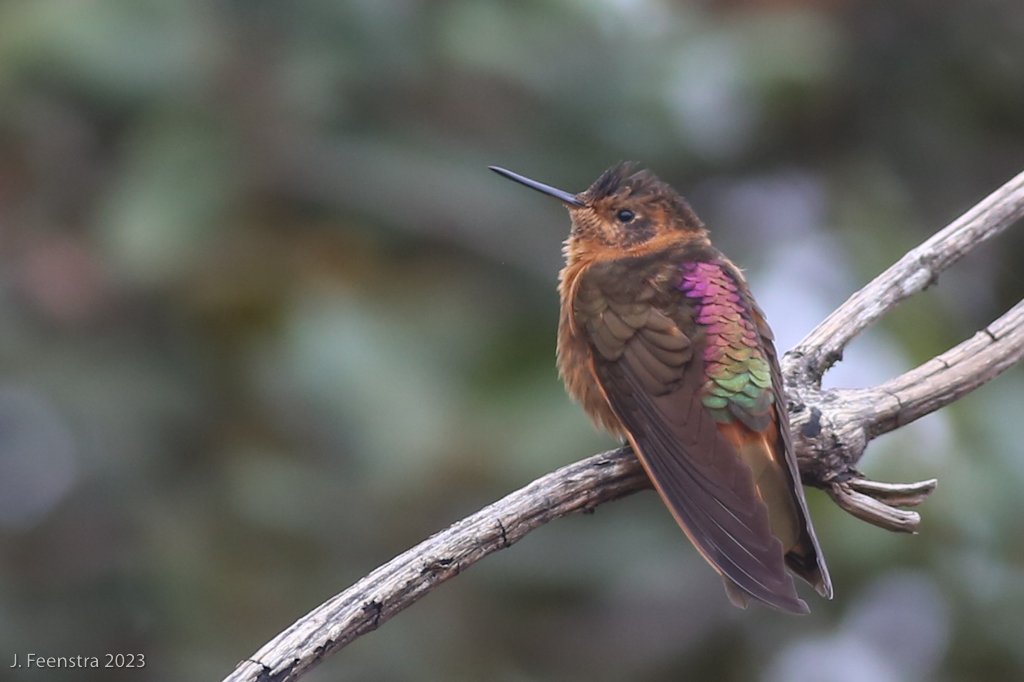
Though we’re basically in one place for a week, each day is unique, and perhaps none is more different than the others than our first day in the high elevations. Truly, these alpine birds don’t overlap with the species we see on any of the other days at lower elevations. Exemplifying that was our sighting of a Black-breasted Puffleg, first in tour history, and one of the rarest and most range-restricted hummingbirds (nearly endemic to the reserve). Great hummingbirds were a theme of today (and the whole tour?) with other amazing things like the improbable Sword-billed Hummingbird and the spectacular Shining Sunbeam, beautiful, but a total jerk to the other hummers. We also saw both Tawny and Equatorial Antpittas in the reserve and just some good mixed flocks, often around a flashy Scarlet-bellied Mountain-Tanager. The fog rolled in mid-day and we made our retreat for lower elevations, stopping along the way for our first Roadside Hawk, the first raptor of the tour. We arrived at our birding base at Septimo Paraiso by Mindo, settled in, and sat down for our first great meal.
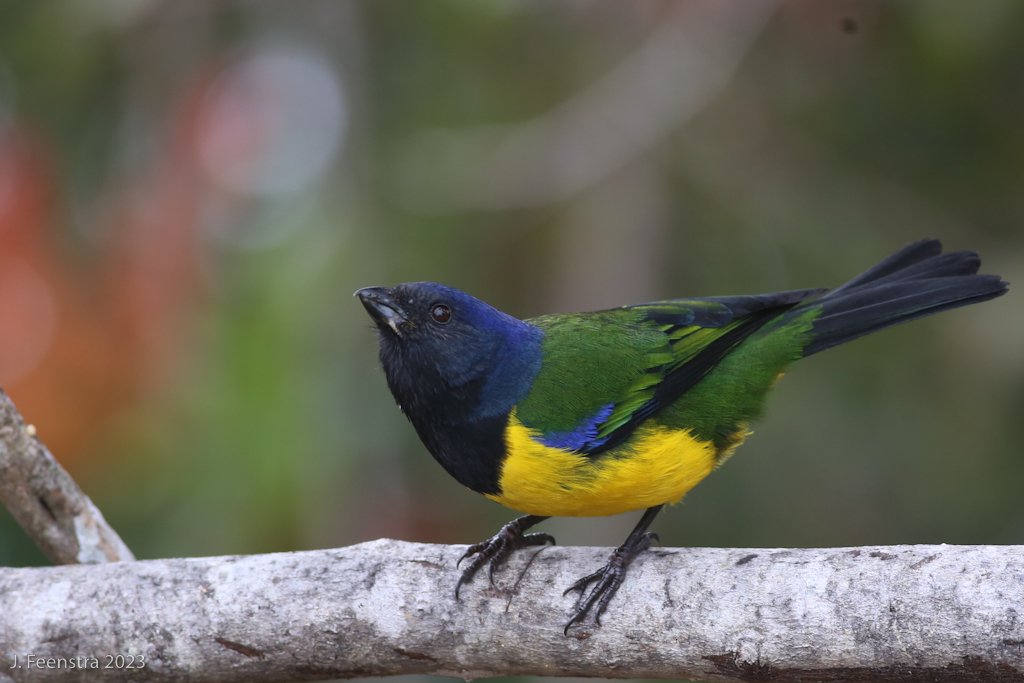
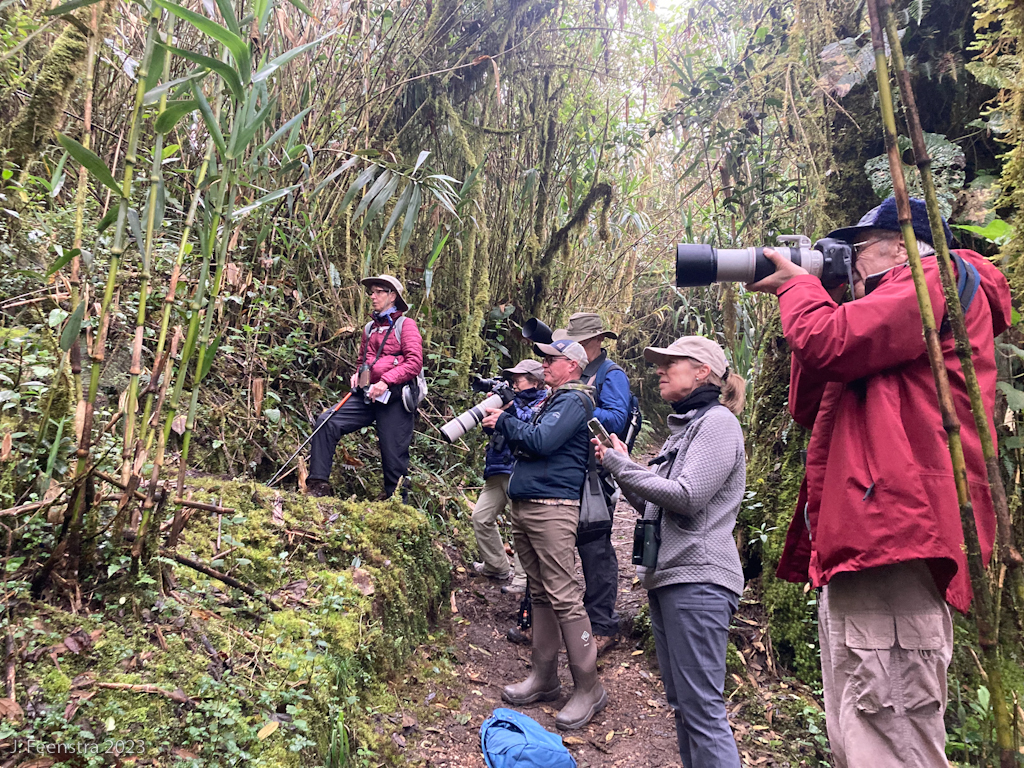
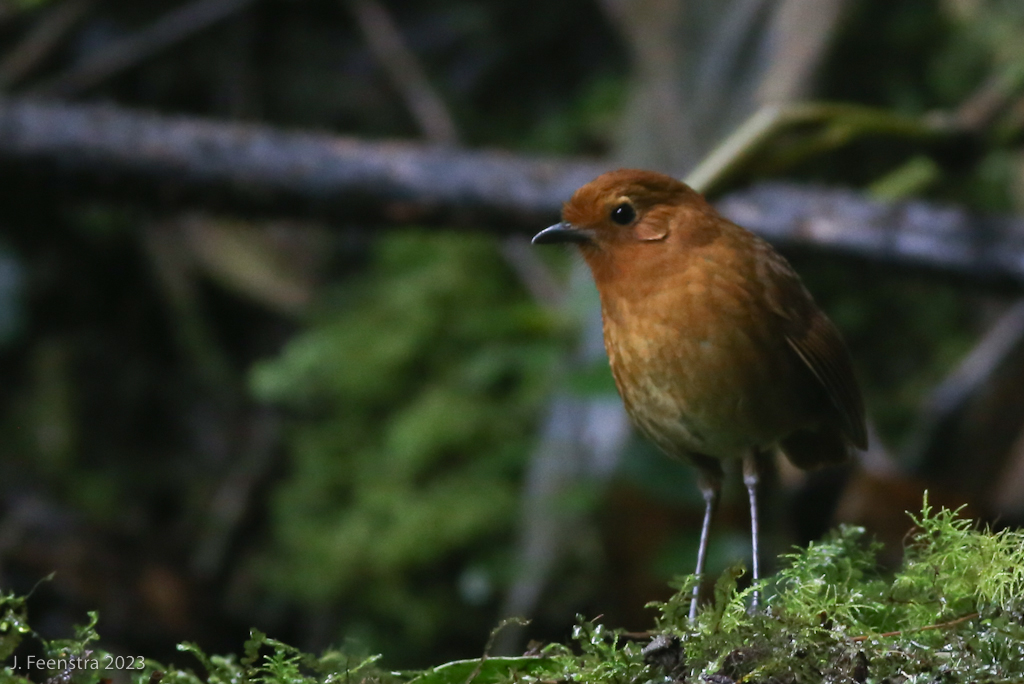

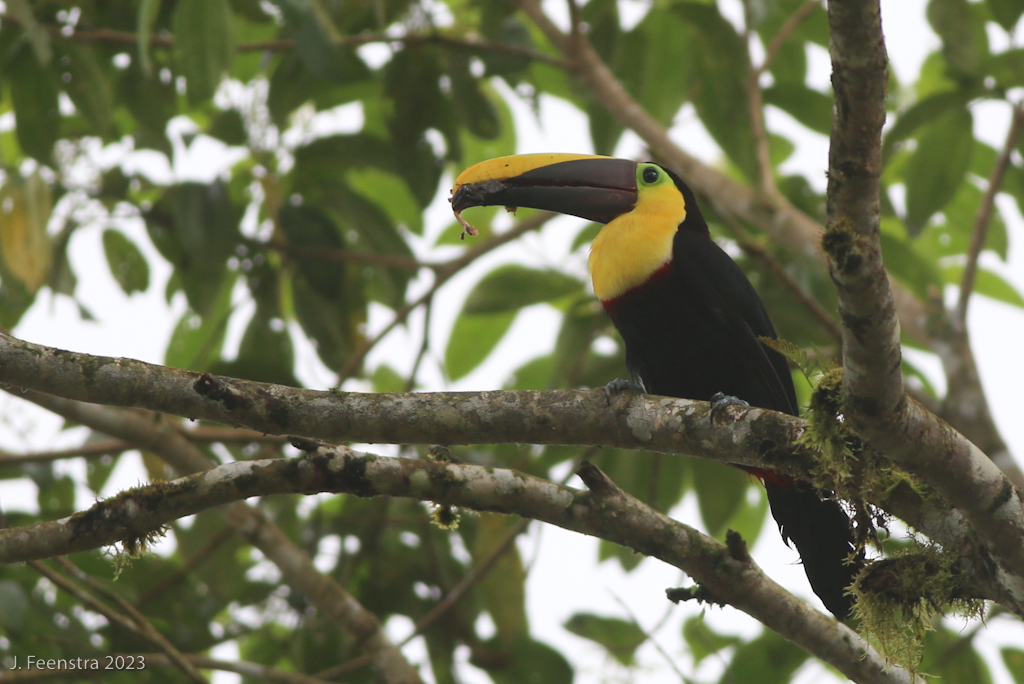

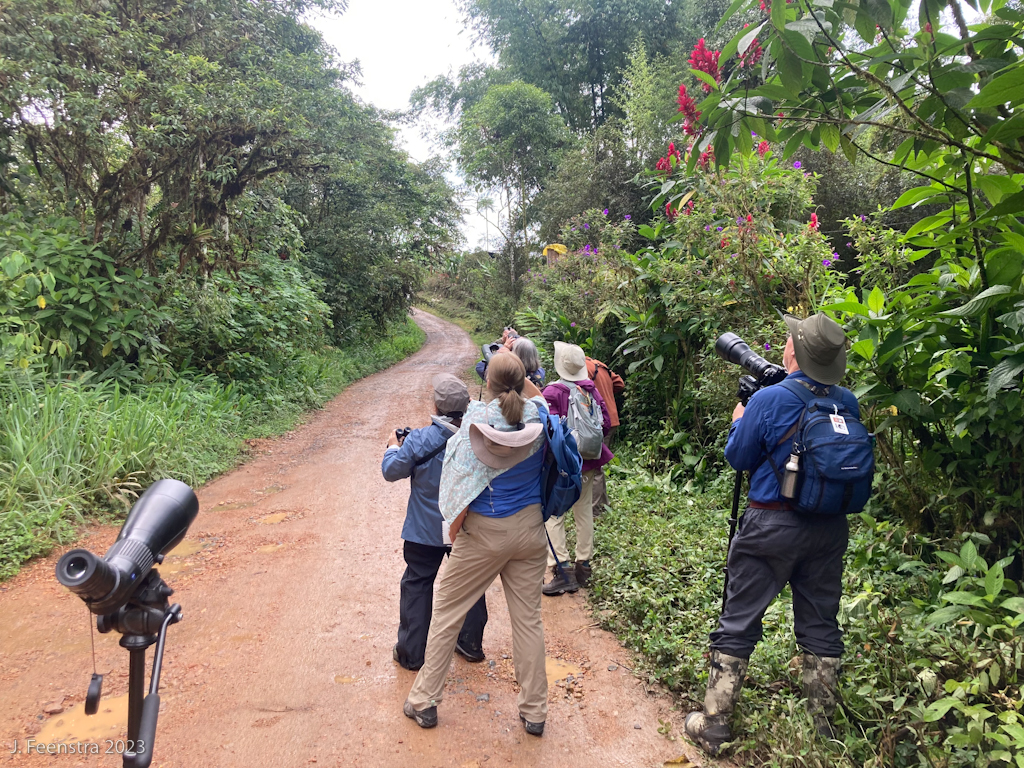
Our first foray from Mindo base was to lower elevations, not “the lowlands”, but parts in between. It was low enough in elevation for a good show of toucans, with looks at three species including point-blanks at Yellow-throated Toucans: two adults carrying frogs and lizards back to some nest. The sky had cleared somewhat and gave way to good soaring conditions – good enough for Swallow-tailed Kite, Hook-billed Kite, and Double-toothed Kite. On a snag below a Guayaquil Woodpecker preened and sunned. Back at the lodge, the rain arrived, but no matter, when it rains, we go under a roof and watch hummingbirds. The White-booted Racket-tails were a crowd favorite, but there were fifteen other species, as well, swarming around, doing battle, and making noise. Some birds were also coming to the banana feeders or feeding in the trees above, including our first proper Tangara tanagers: Golden Tanagers, Silver-throated Tanager, Flame-faced Tanager, and Beryl-spangled Tanager.
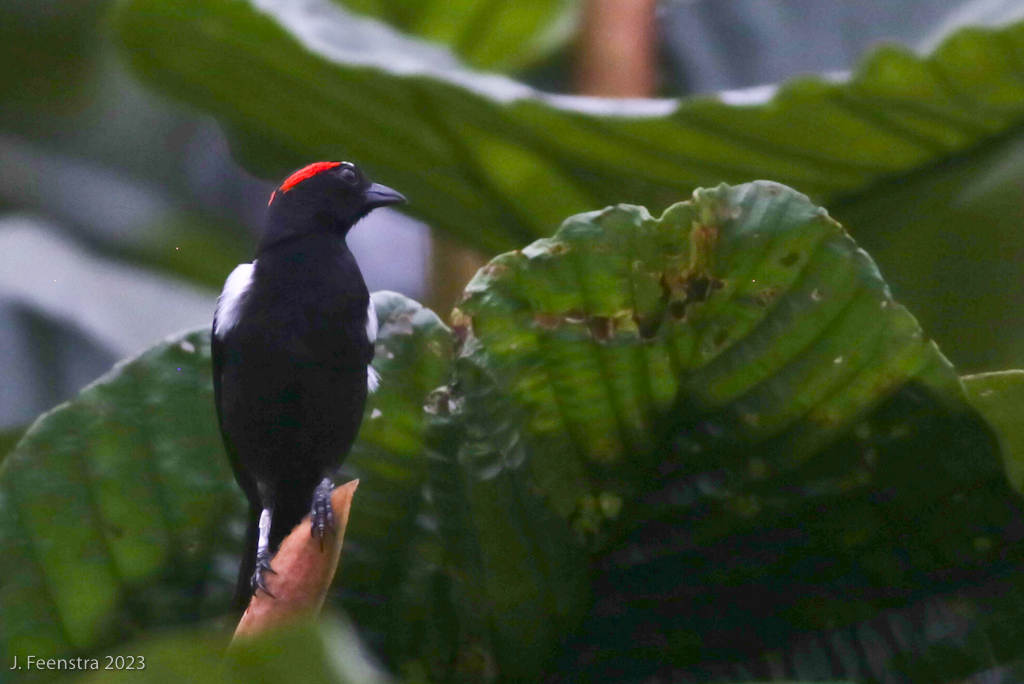
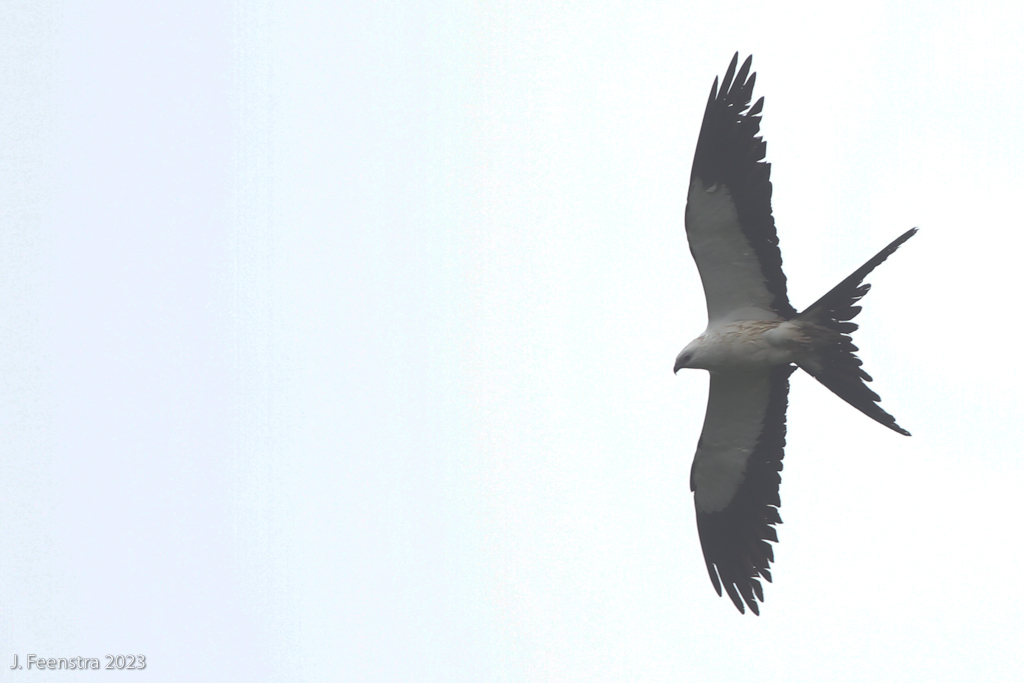


The next day we did the lowlands, the real lowlands – the hot, sticky ones that feel appropriately tropical. And, indeed it was, and with it, some of the great iconic birds. We started at the tower at Rio Silanche and saw both Green and Purple Honeycreepers, plus both Scarlet-thighed and Scarlet-breasted Dacnises. The hits continued with White-tailed and Black-throated Trogons. Swallow-tailed Kites coursed overhead. Leaving, a stop on the entrance road put us in touch with a Rufous-tailed Jacamar. Our last stop of the day was at some bird feeders (and cold drinks for us). Since the weather was pretty nice, the feeders didn’t have too many customers, but the Rufous Motmot eating bananas was enough, and the area around the feeders made up for whatever didn’t want to eat in front of us. A Band-backed Wren was grumbling from a vine tangle. A pair of Pale-legged Horneros was building a mud nest on a branch. We watched some Gray-and-gold Tanagers working the canopy below us from the balcony. Finally, in the parking lot a Masked Water-Tyrant was on patrol while a Yellow-tailed Oriole sang from a treetop. It was a long day and an early morning, but the action never really stopped and the time flew right by.
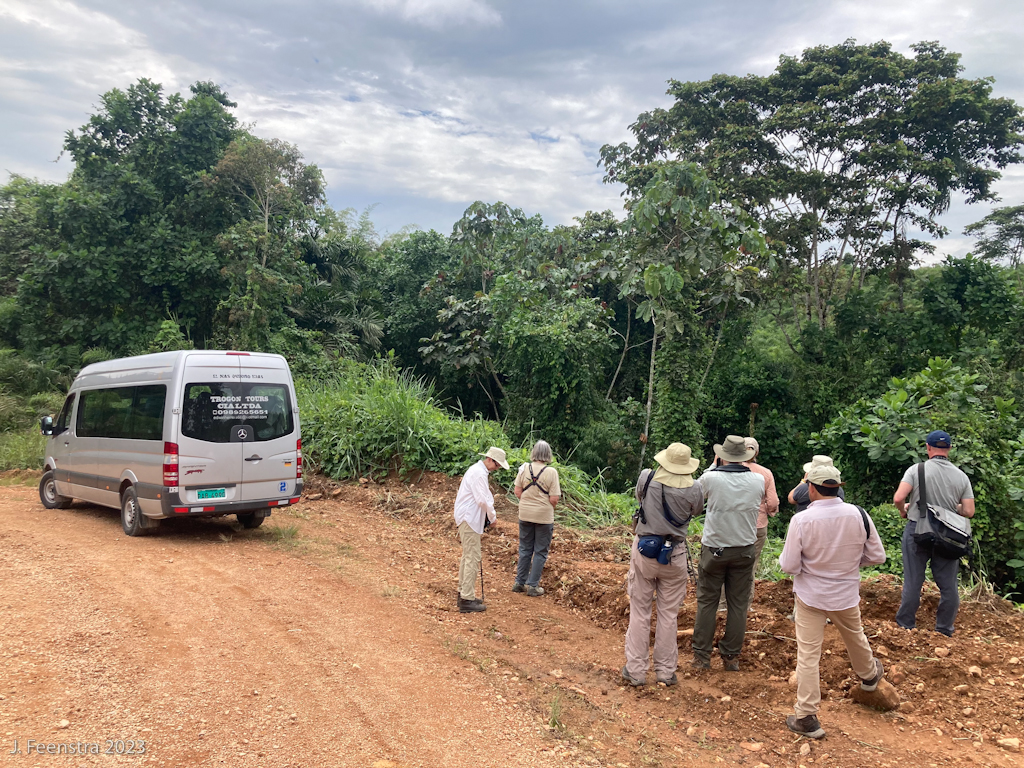
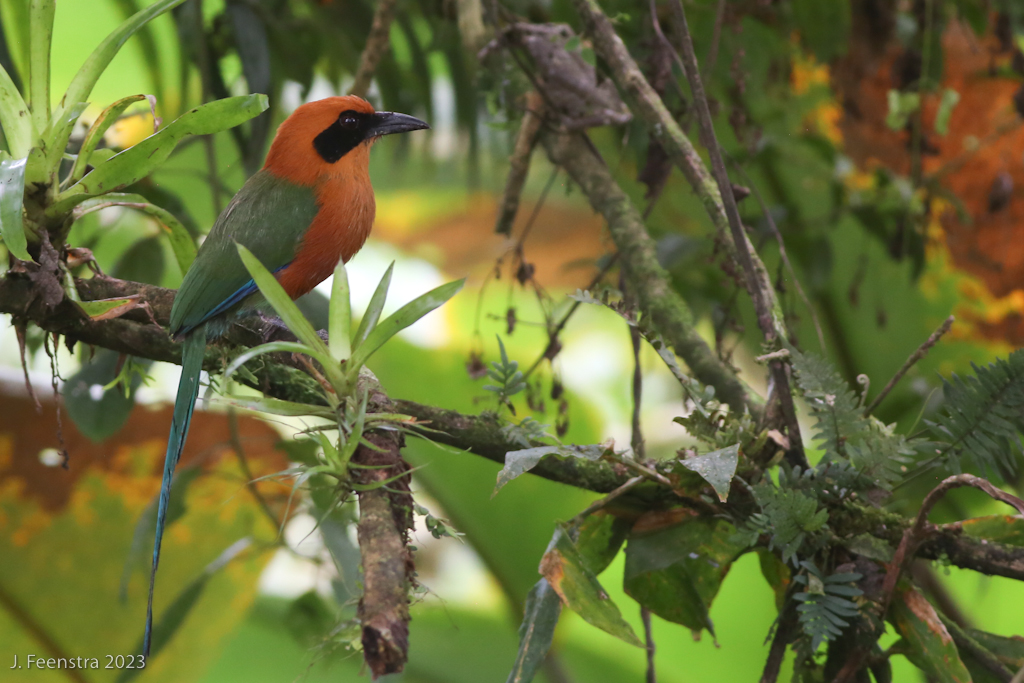
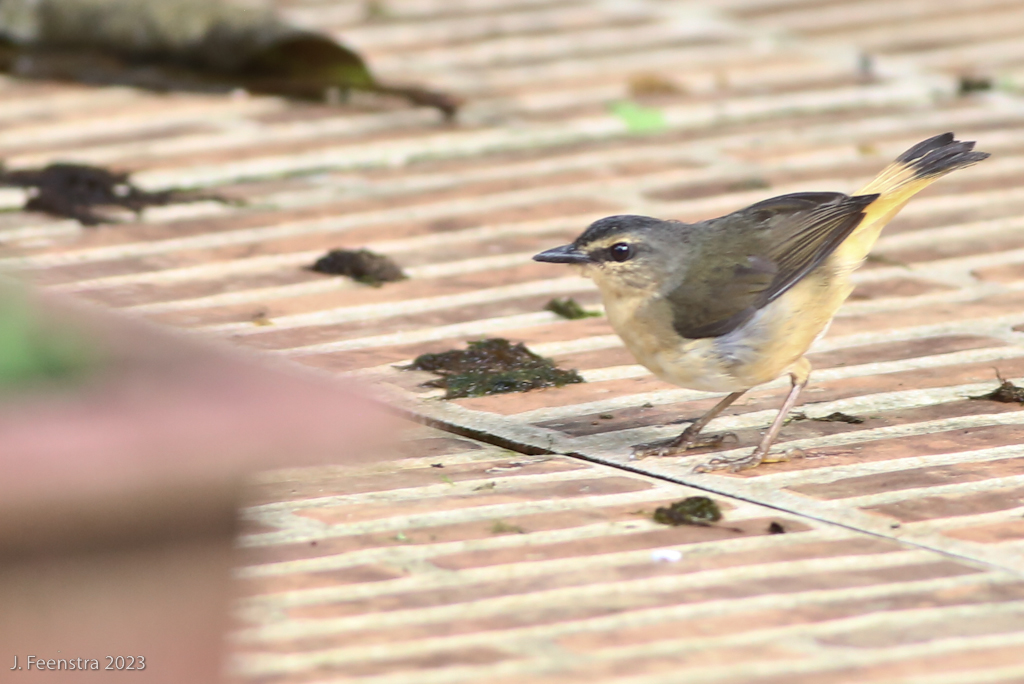
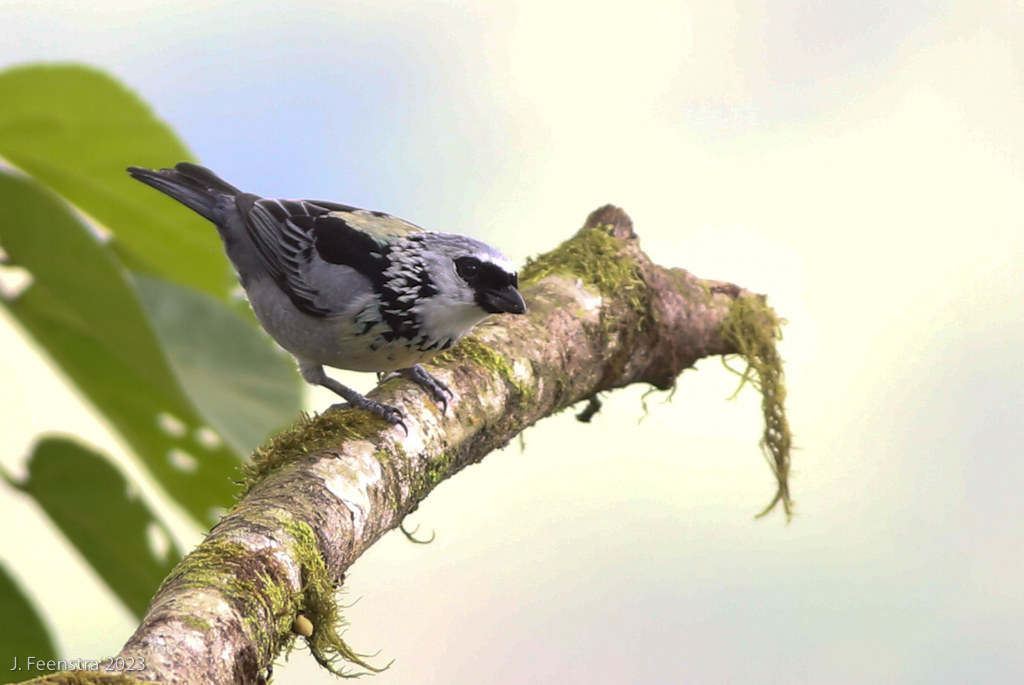
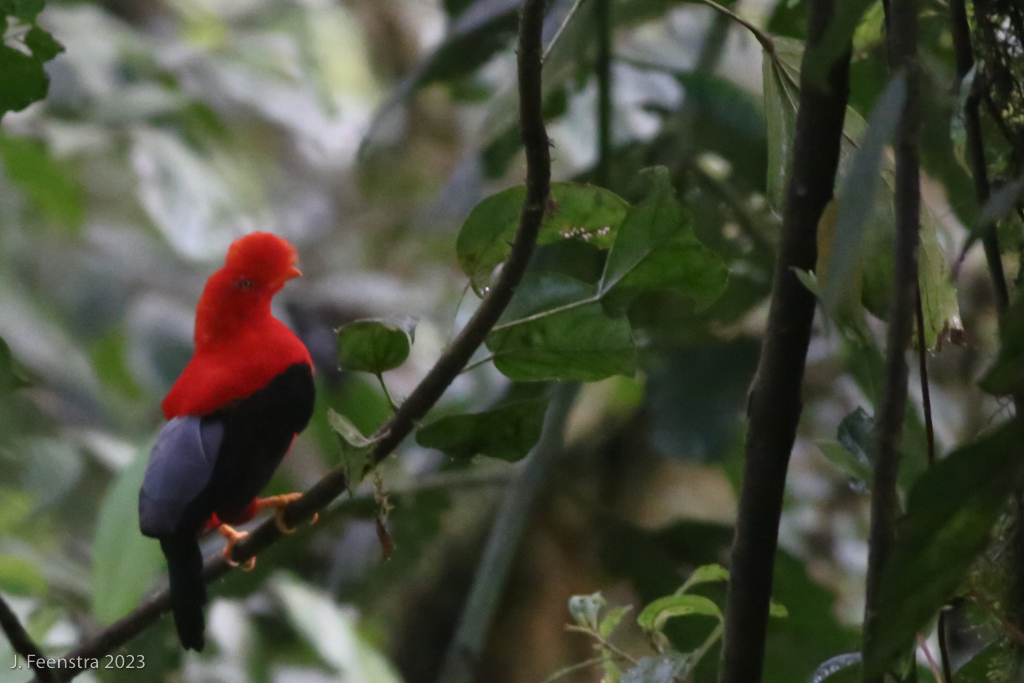
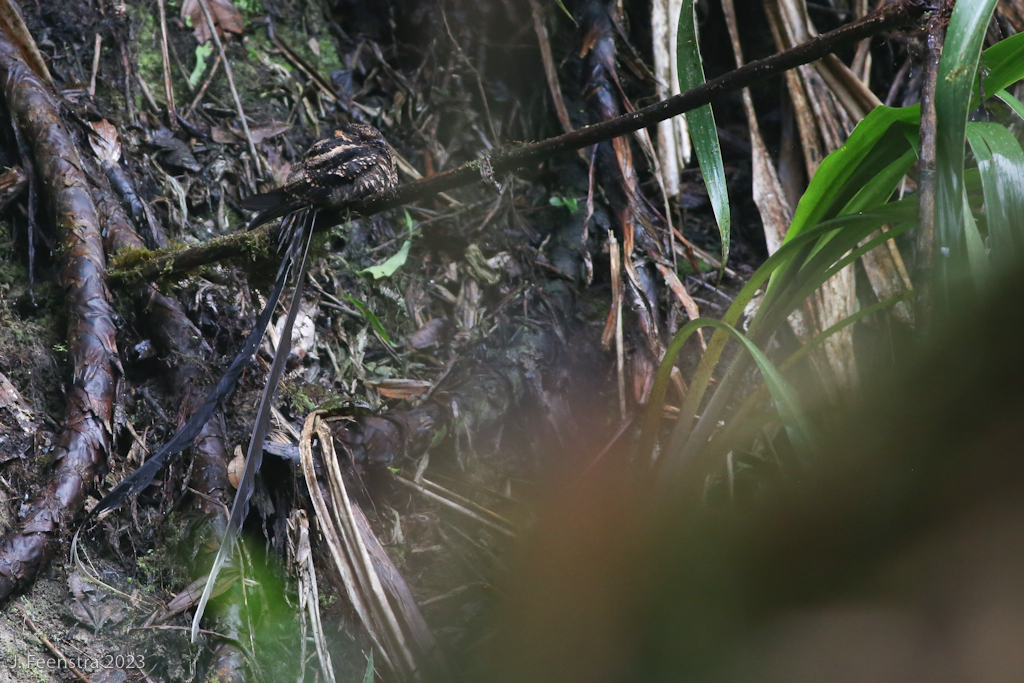
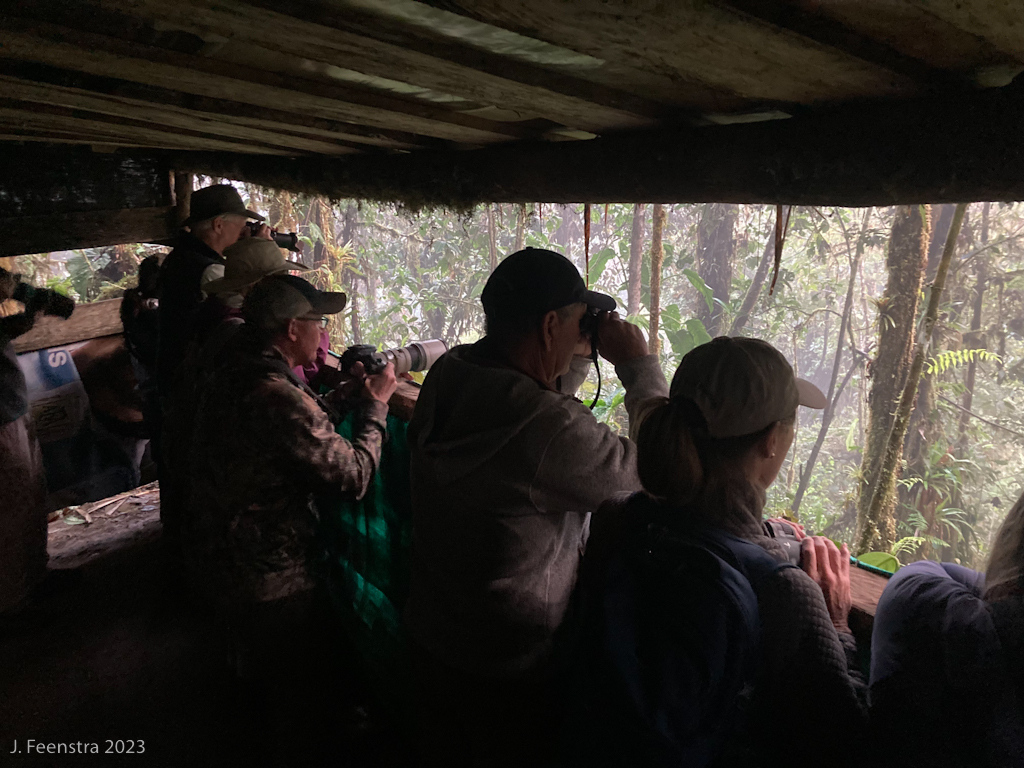
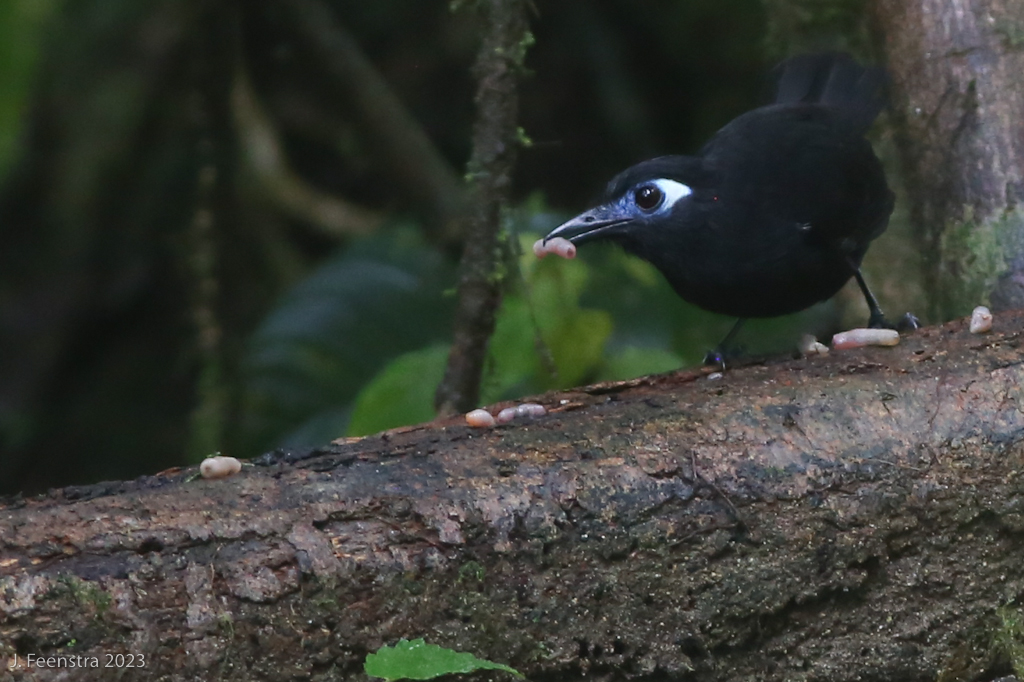
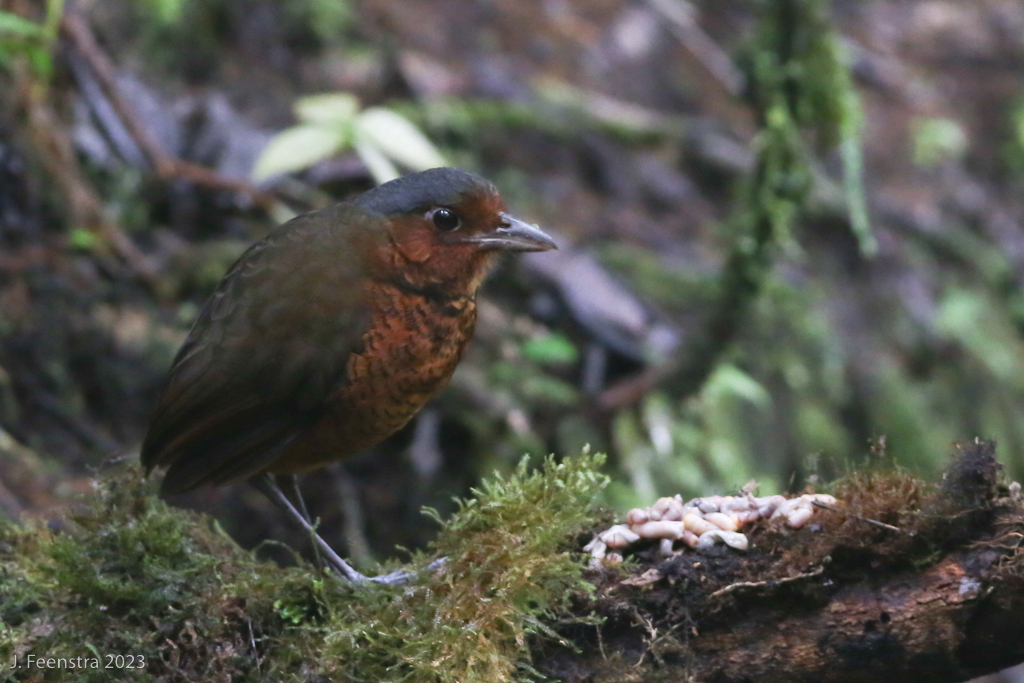
The day at Reserva Paz de las Aves is always an extraordinary one. We usually do it later in the tour, so we can thrash around with the forest birds for a while before seeing them easily with Angel Paz, but our day was mid-tour instead. No worries, though, the birds were still amazing. We started pre-dawn with the screeching red craziness of the Andean Cocks-of-the-rock on display at their lek. From there we were guided around Angel’s property and shown a spectacular day-roosting Lyre-tailed Nightjar, then a pair of Zeledon’s Antbirds. From that it was a difficult, muddy slog, but we saw a Giant Antpitta, the iconic “Maria” that started the development of the entire reserve. After our Andean breakfast we then visited the Ochre-breasted Antpitta and finally the Chestnut-crowned Antpitta before the fog rolled in, it started raining, and it was time for us to go. It’s always a little different and always a special day (and a mandatory visit when in the area).
We returned to higher elevations in search of more birds. In a clear morning we could see Volcan Pichincha looming in the distance. Along a quiet road we walked through primeval cloud forest with great mossy limbs looming over the road. Herein we connected with some flocks of tanagers, some new to us on the tour like Golden-naped, Black-capped, Blue-capped, and Blue-and-black. We also had multi-angle looks at Golden-headed Quetzal, and a flight view as its red breast blazed through the forest. We had two encounters with Masked Trogon, both a male and a female. At lunch we sat at some hummingbird feeders – the hummingbirds were perhaps as into seeing us as we were in seeing them and they were landing on our hands, feet, hats, phones, Doritos bags, whatever. A tayra was also stalking around nearby, possibly lured in by the smell of lunch. Our final stop was on a bridge overlooking a rushing river – for river things. We saw pairs of both White-capped Dipper and Torrent Tyrannulet, two whitewater species, and a satisfying end to the day.

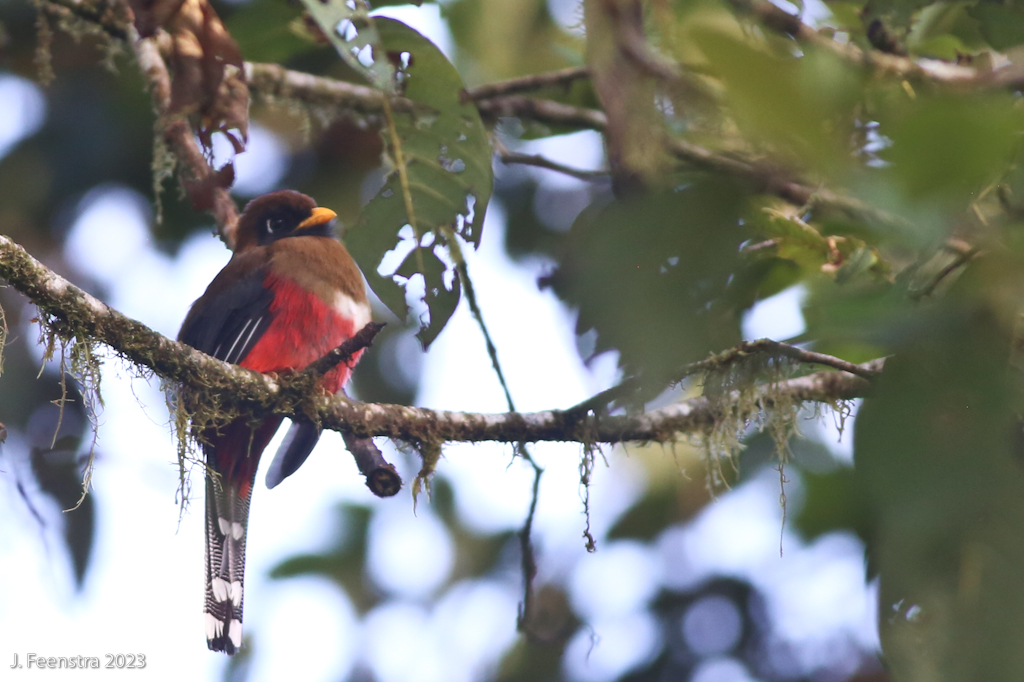
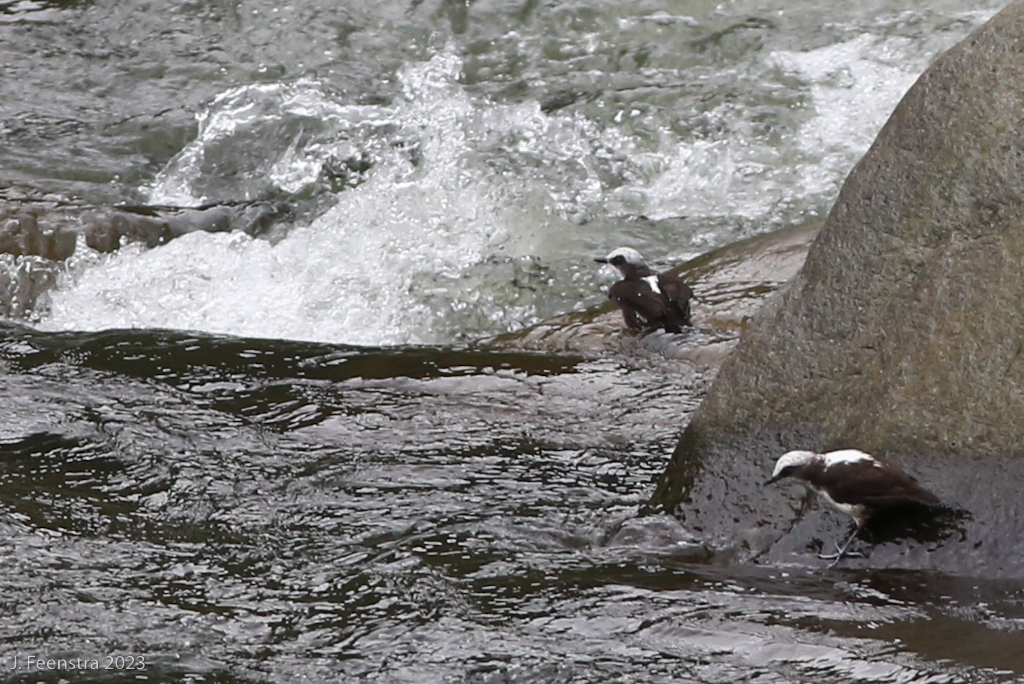
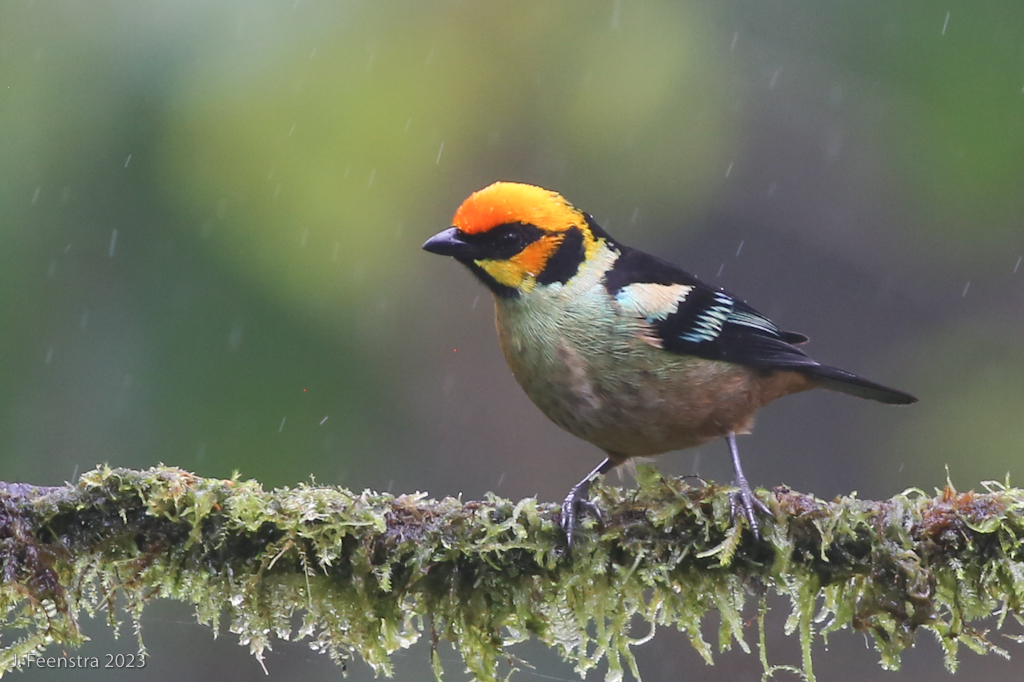
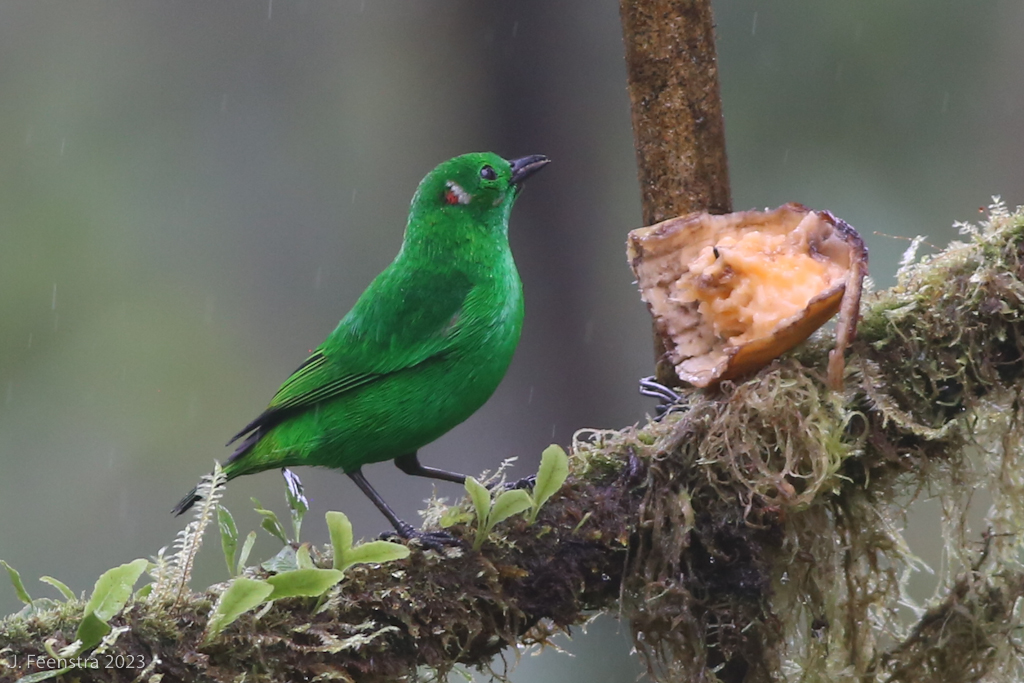
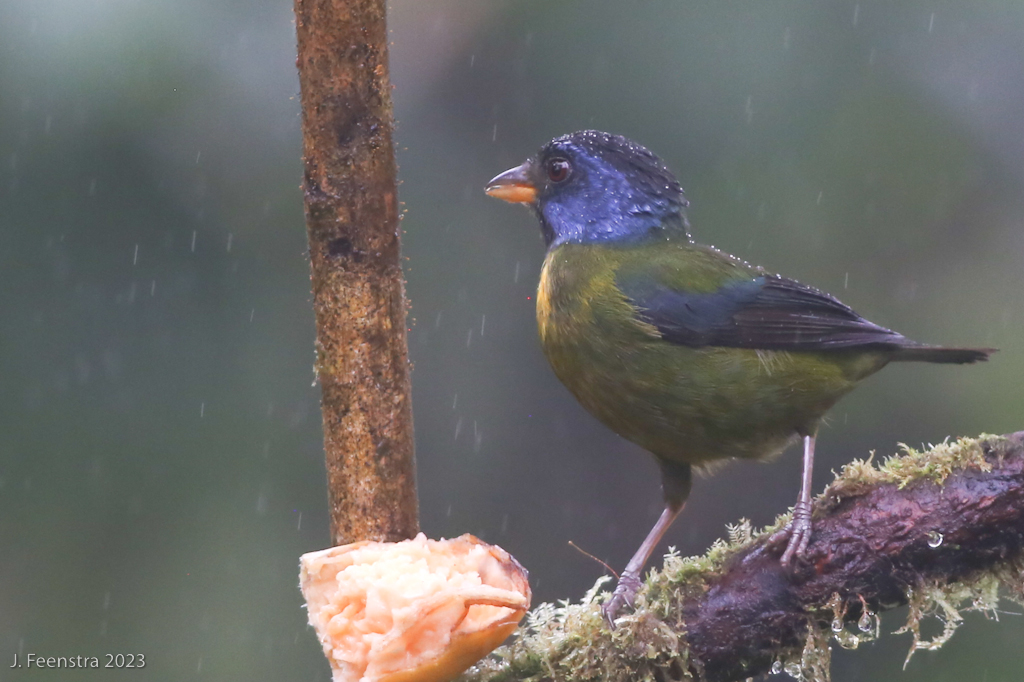

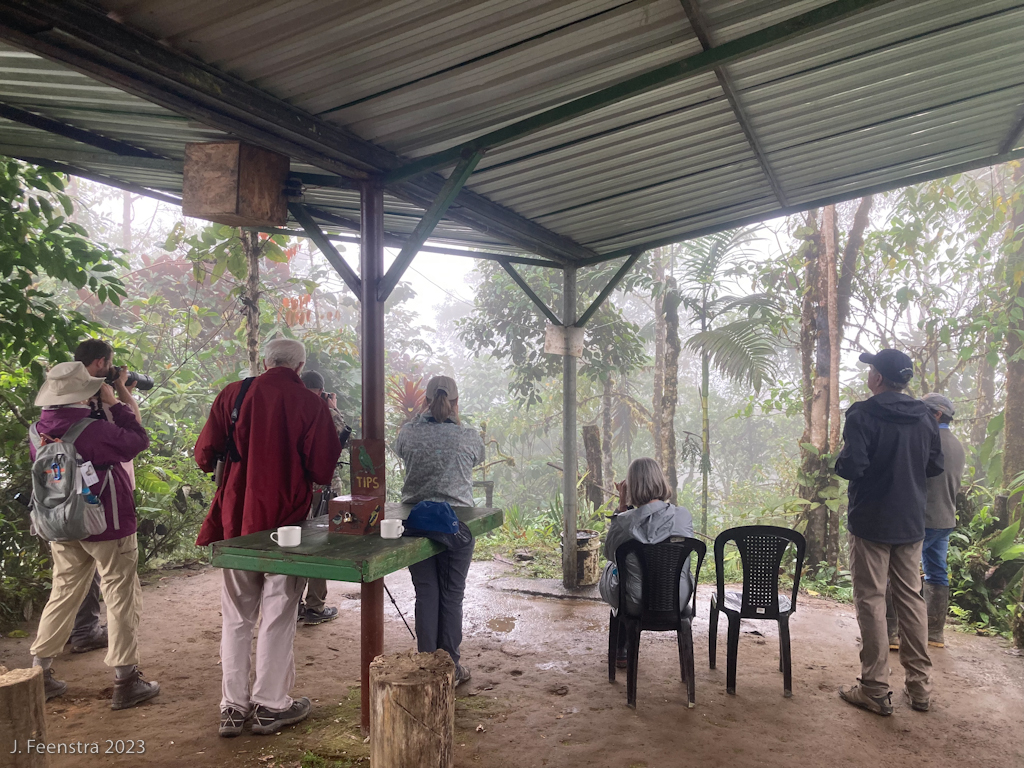

Our last full day was spent in the Mashpi area. It’s a long drive, and it’s about the same elevation as Mindo, and still cloud forest, but for birds it’s somehow a different world. Birds that are rare around Mindo are pretty common there. We saw multiple Orange-breasted Fruiteaters and Glistening-green Tanagers. And, Toucan Barbets, which we had gone all week without. We also had additional and better looks at Golden-headed Quetzal and Red-faced Spinetail (that one for both the away team and the home team). There was even a Sora, a very rare winter overshoot in Ecuador, in the little pond by the reserve restaurant.
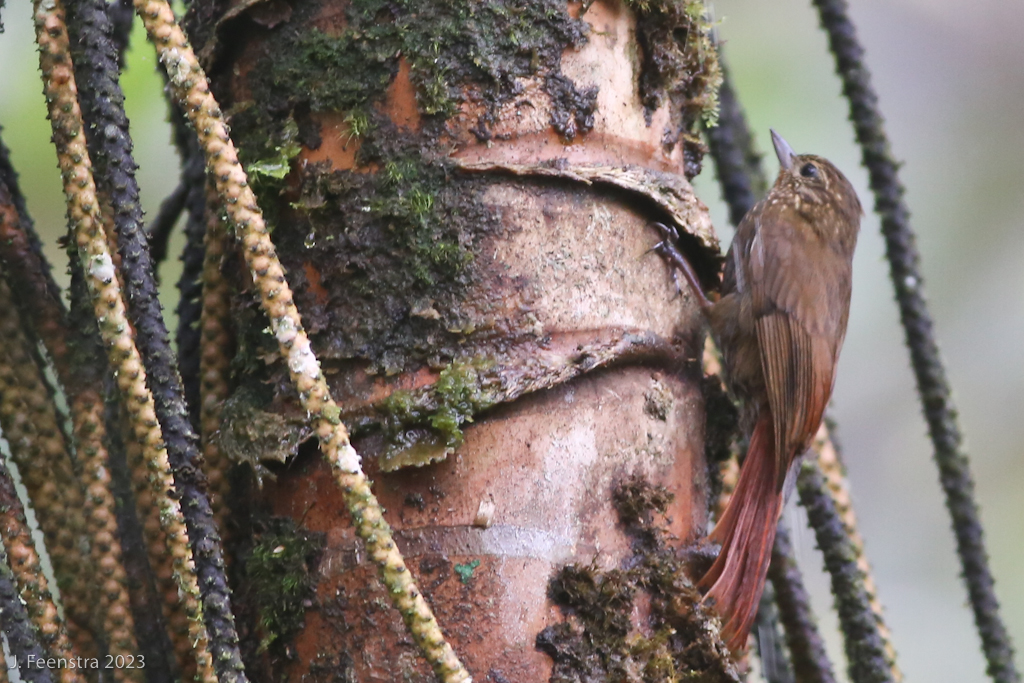
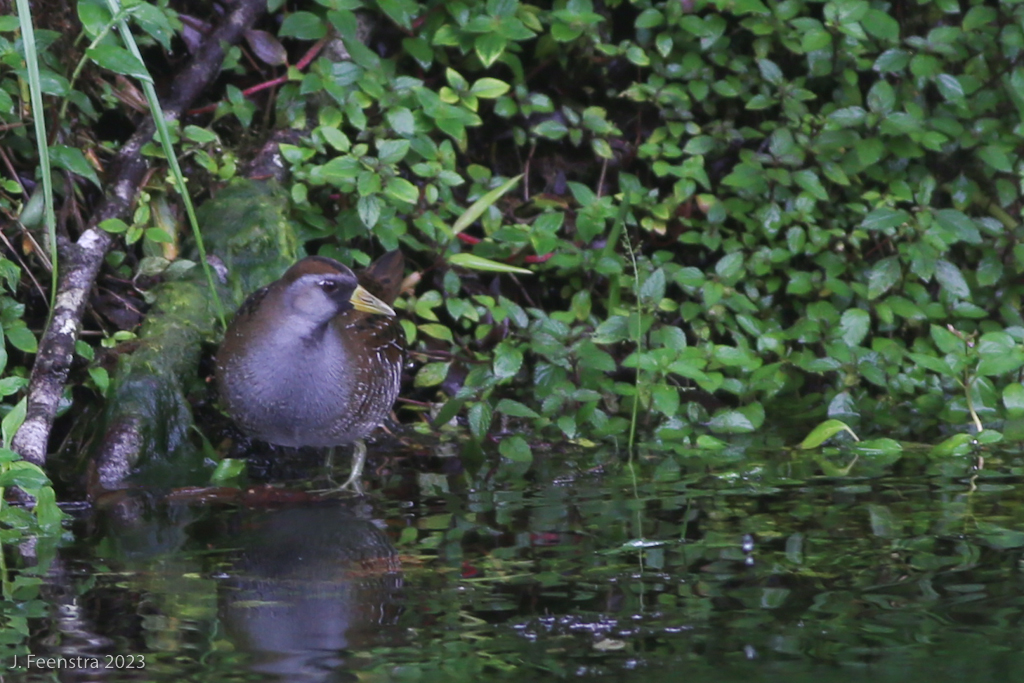
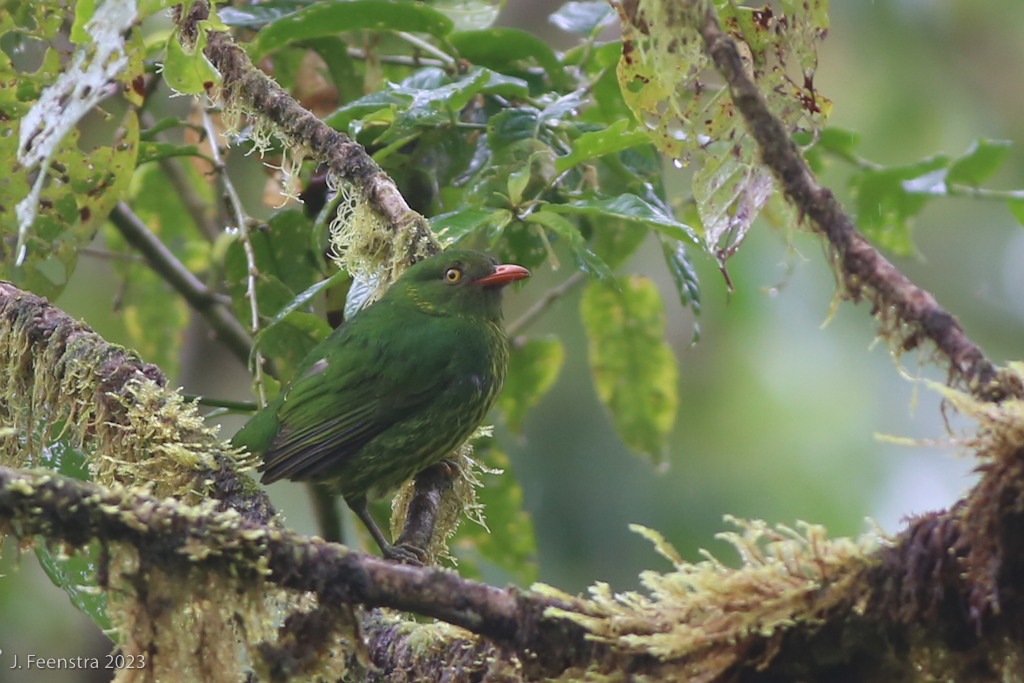
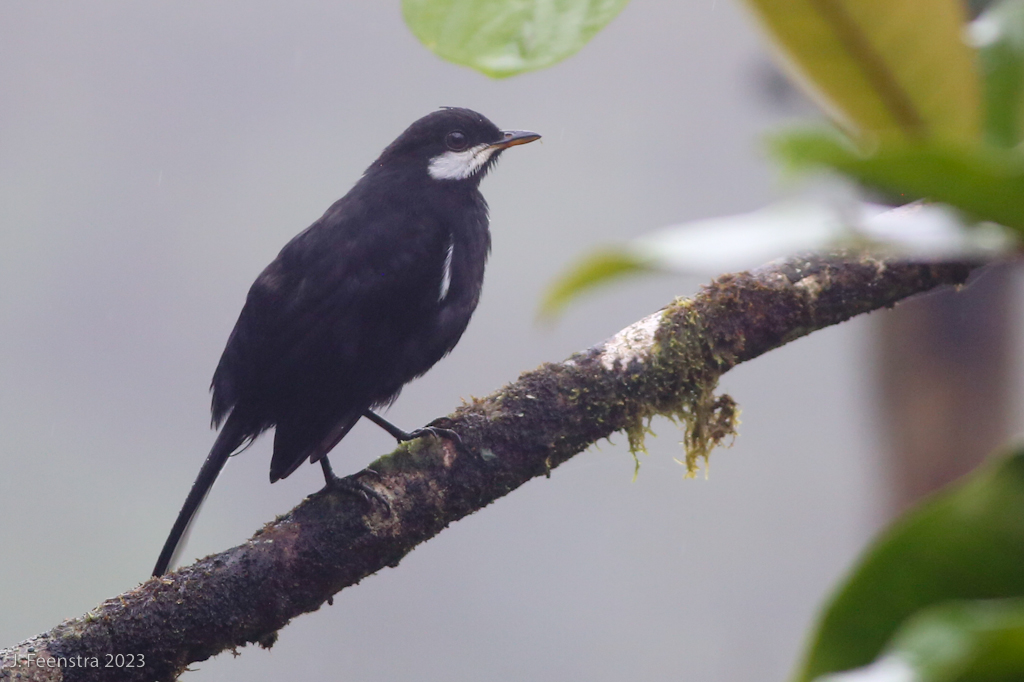
Our last day and way back to Puembo wasn’t just driving, of course. We made stops at various reserves and feeders and had some of the highlights of the tour. Up at Bellavista we got much better views of Plate-billed Mountain-Toucan as they gobbled bananas. Down the hill at Alambi there were clouds of hummingbirds, mostly the tiny ones: White-booted Racket-tails and Purple-throated Woodstars. Nearby at our lunch stop, there were more birds coming in, and we saw both male, female, and juvenile Red-headed Barbets, plus another handful of fancy tanagers: Black-capped, Bay-headed, and Golden. We then passed into the arid central Andean valley and had a pretty dull stop in the cold and wind, but the thornscrub was about as different to what we had been in as it could get. Our final stop was at a drainage basin near the airport where we had some Slate-colored Coot, Yellow-billed Pintail, and a pair of Andean Gulls. We got to Puembo at the end of the trip ready to kick back, have a drink, and another delicious meal.
